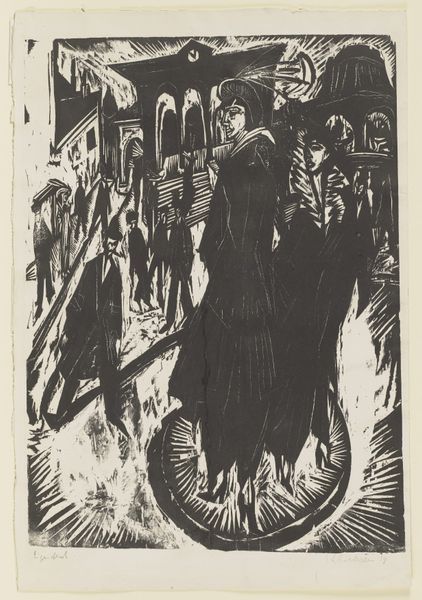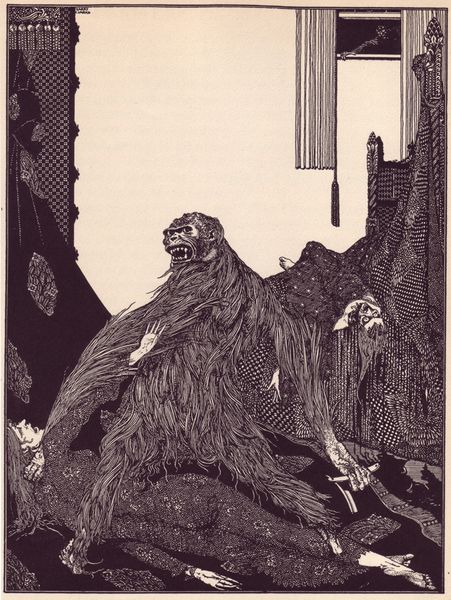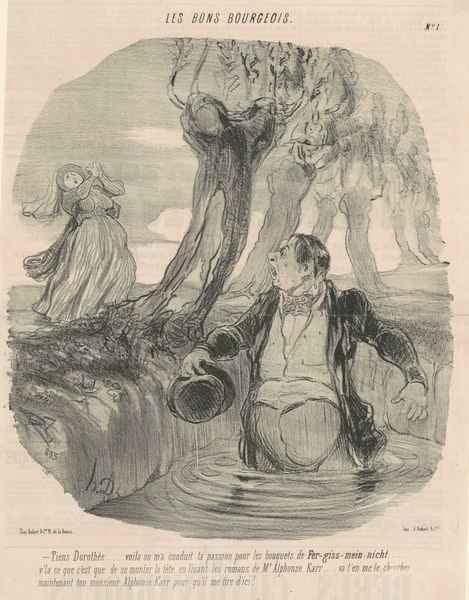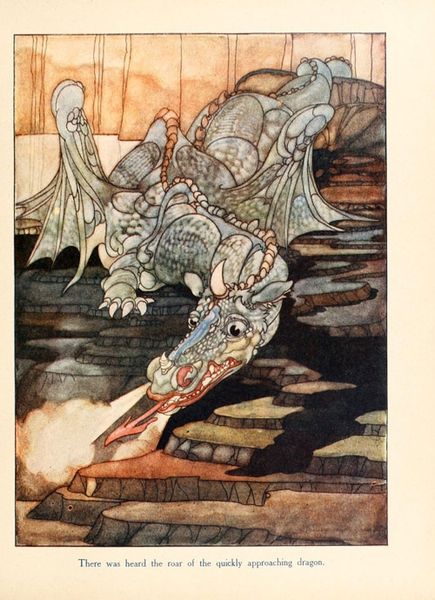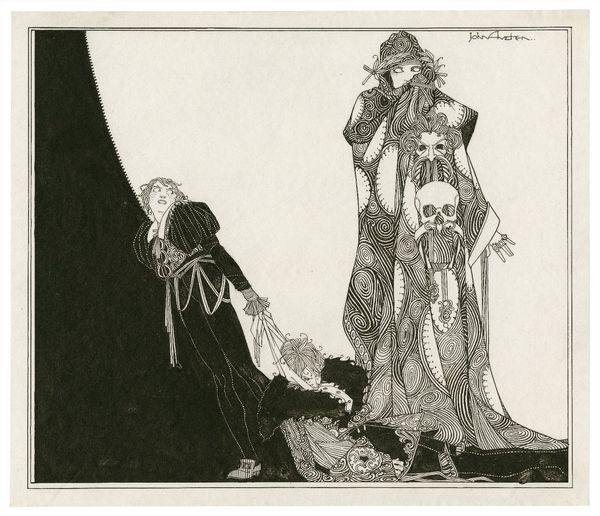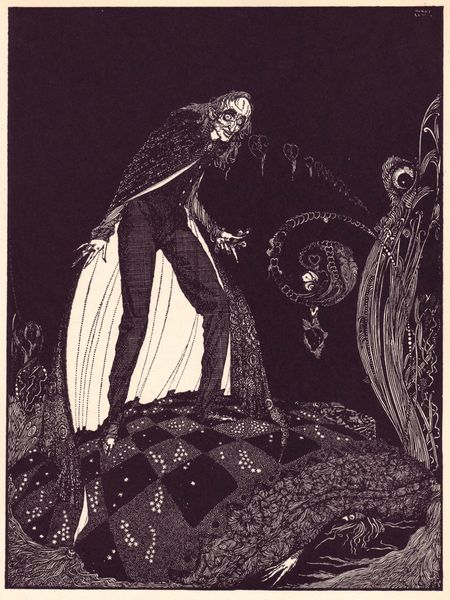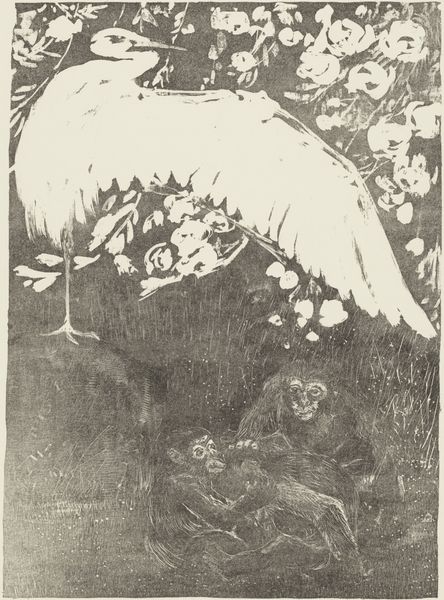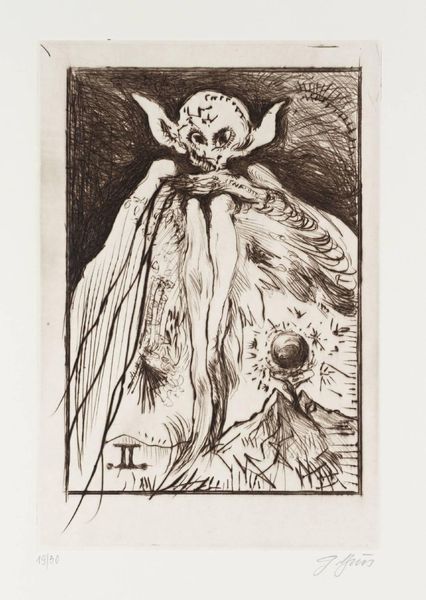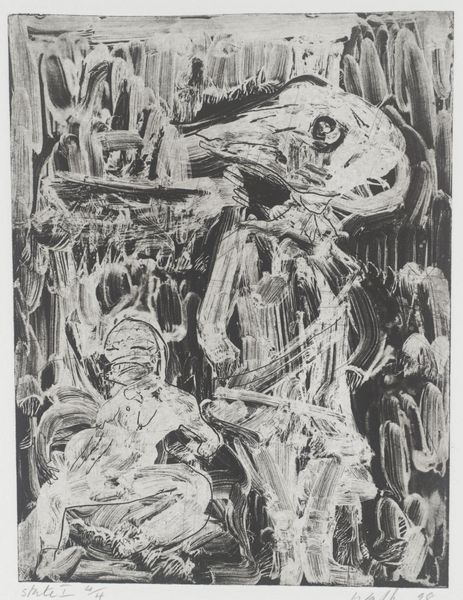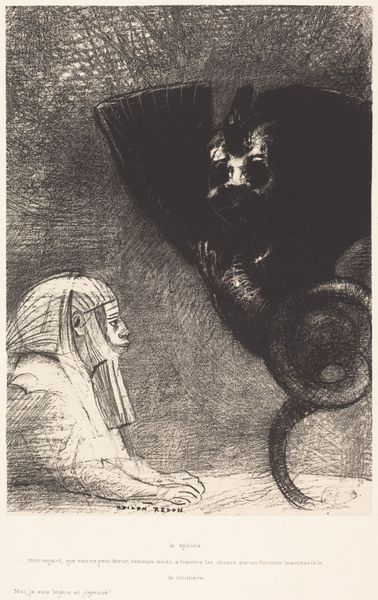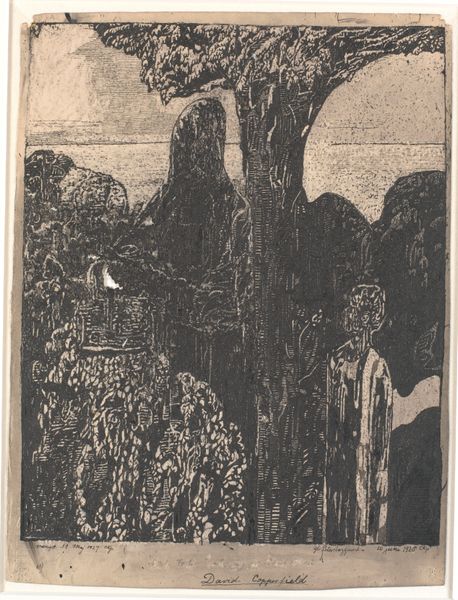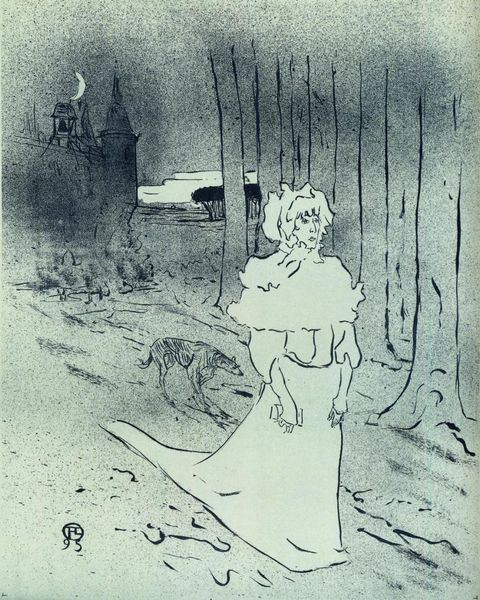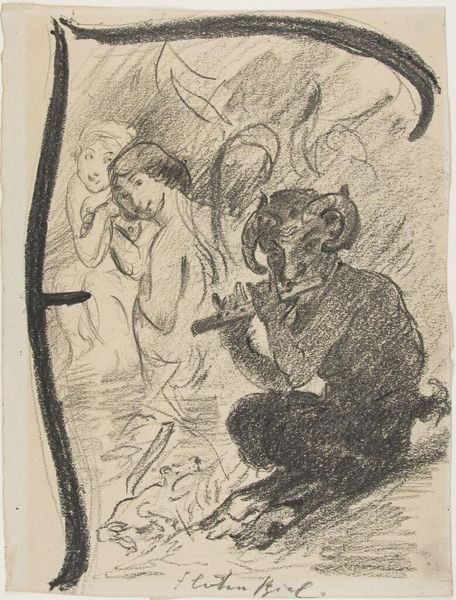
painting, watercolor
#
painting
#
fantasy-art
#
figuration
#
watercolor
#
coloured pencil
#
cityscape
#
mixed media
#
watercolor
Dimensions: height 212 mm, width 173 mm
Copyright: Rijks Museum: Open Domain
Curator: The Rijksmuseum holds this curious piece by Bernard Willem Wierink, mixed media including watercolor and colored pencil, titled "Knight and Giant Ape", believed to have been created sometime between 1908 and 1937. What is your initial reading of it? Editor: Stark and ominous. The imposing size of the ape compared to the almost ethereal figure of the knight gives a real sense of dread. Curator: Indeed. Considering its creation period, what narratives do you see emerging from its visual elements? I’m particularly interested in its representations of power. Editor: The monstrous ape, dominating a cityscape backdrop dotted with what appear to be factories, reads as an embodiment of unchecked industrial power. The knight, almost washed-out, seems powerless to challenge it, reflecting perhaps a growing unease about environmental exploitation and the subjugation of the individual. There's a postcolonial element too; the West "civilizing" through brutal domination and resource extraction. Curator: I see the figure, almost certainly gender ambiguous, as challenging classical patriarchal notions. How do you perceive the significance of situating the piece within the context of increasing labor movements and worker rights discourse during the early 20th century? Could the ape also be read as a grotesque personification of exploitative capitalist structures? Editor: Certainly. I also read it as a bleak social commentary of that era. It showcases a stark tension, visually articulated through contrasting scales and almost clashing thematic components; a figure from a classical time pitted against a grotesque being in what resembles an industrial landscape, Curator: I agree. And consider Wierink’s stylistic choices; the use of watercolors adds a dreamlike quality, blurring lines between reality and fantasy. It allows the artist to tackle complex social issues, albeit couched in the guise of symbolism, and comment on those issues safely in a society riddled with inequality and hardship. Editor: Looking closer, there's an incredible rawness in the work. The materials add urgency to the sociopolitical and philosophical quandaries the artist seemed keen to represent, as if an attempt to materialize what he sees is the only option. The loose brushstrokes communicate chaos. It compels the viewer to reflect upon their agency within larger structures. Curator: It’s striking how the painting remains resonant, more than a century later. Editor: Absolutely, and those issues have remained unchanged, despite decades gone by. A testament to art’s power, isn’t it?
Comments
No comments
Be the first to comment and join the conversation on the ultimate creative platform.
